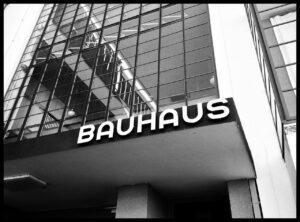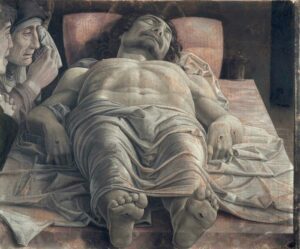Gesamtkunstwerk is a fascinating concept where art transcends its boundaries to create a total work of art.
It’s an immersive experience that synergizes various art forms, including architecture, music, and theater.
We’ll explore how this approach has revolutionized artistic expression and influenced creators across disciplines.
Join us as we jump into the world of Gesamtkunstwerk and discover its impact on the arts.
Origins And Definition Of Gesamtkunstwerk
Gesamtkunstwerk is a term that resonates deeply with us as art historians interested in the cross-pollination of artistic forms.
It’s a German word that literally translates to “total work of art.
” The concept dates back to the early 19th century and is rooted in the German Romantic movement.
Philosopher K.
F.
E.
Trahndorff first coined the term in 1827, but it was later popularized by the composer Richard Wagner.
Wagner envisioned the unification of all arts – including poetry, music, dance, and visual imagery – to create a more profound and complete artistic experience.
His operas, most notably the Ring cycle, are quintessential examples of Gesamtkunstwerk in practice.
The integration of thematic elements across multiple disciplines aimed to immerse audiences completely in the narrative.
- The key components of Gesamtkunstwerk include: – Synchronization of visual, auditory, and performative elements – A holistic experience that engages multiple senses – An emphasis on thematic and emotional cohesion.
Artists and creators from various disciplines have adopted and adapted the principles of Gesamtkunstwerk.
In film, we often strive for a synthesis of storytelling, visual effects, sound design, and musical scores to transport viewers into another world.

It’s not merely a technique but a philosophy that encourages us to think beyond traditional boundaries and explore new dimensions of expression.
Delving into the historical aspects of Gesamtkunstwerk allows us to appreciate its transformative power.

It’s not just an idea confined to the annals of art history but a living, breathing entity that continues to inspire innovation and creativity in filmmaking and beyond.
Understanding its origins helps us grasp the magnitude of its influence on art forms throughout the centuries and its relevance in contemporary artistic endeavors.
Interplay Of Different Art Forms
The concept of Gesamtkunstwerk blurs the boundaries between distinct artistic disciplines to create a unified experience.
At its core, it advocates for the interplay of diverse art manifestations – the visual galaxy colliding with harmonic constellations and kinetic expressions.
As art historians with a keen interest in the evolution of artistic movements, we’ve seen how this synthesis transcends the limitations of singular mediums, benefiting the audience with a richer sensory engagement.
Take cinema, for instance: it’s a modern breeding ground for Gesamtkunstwerk, where elements such as The Cabinet of Dr.
Caligari or The Fall showcase:
- Aesthetic unity between set design and cinematography,
- Choreographed movement resonating with rhythmic score,
- Narrative and visual symbolism threading together to form a cohesive story.
Filmmaking, inherently multidisciplinary, often employs this fusion to elevate storytelling.
Imagine a scene underscored by a stirring orchestral piece; the music accentuates the emotional weight of the visuals, creating a seamless bond between auditory and visual stimuli.
This is Gesamtkunstwerk in motion, crafting a world where each artistic layer is integral to the overall impact.
In our exploration, we’ve come across numerous instances where the principles of Gesamtkunstwerk are evident.
From theatrical stages to the grand architecture of museums, the desire to encapsulate a holistic representation of thematic ideas propels creators to innovate continuously.
Opera, in particular, remains a stalwart domain of Gesamtkunstwerk, with its intricate combination of drama, music, stage design, and performance to produce an unparalleled operatic spectacle.
Our commitment to studying various art forms from all epochs and regions has shown us that Gesamtkunstwerk is not exclusive to Western traditions.
Across the world, cultural performances often embody this total artwork approach, reinforcing the universality and timeless appeal of Gesamtkunstwerk in art.
Key Examples In The History Of Gesamtkunstwerk
While exploring the concept of Gesamtkunstwerk, certain historical milestones stand out for their influential impact:
- The Ring of the Nibelung by Richard Wagner – Wagner’s famous opera cycle is perhaps the epitome of Gesamtkunstwerk in practice, bringing together music, poetry, drama, and visual spectacle in a way that had never been done before.
- The Sagrada Familia by Antoni Gaudí – This magnificent basilica in Barcelona exhibits a fusion of Gothic and Art Nouveau styles, encapsulating Gaudí’s vision of architecture as a complete art form that incorporates structural elements, sculpture, and crafts.
These key examples illustrate the ethos of Gesamtkunstwerk which reaches far beyond its Germanic origins to influence global art forms.
We see mesmerizing displays of this ‘total art style’ across:
- Film – Metropolis by Fritz Lang; a silent film masterpiece that combines set design, special effects, and a symbolic narrative to deliver a poignant societal critique.
- Architecture – The Sydney Opera House with its seamless blend of engineering, architecture, and cultural symbolism, representing Gesamtkunstwerk principles on an epic scale.
Understanding Gesamtkunstwerk’s presence in history helps us grasp its timeless allure.
It’s a catalyst for modern creators who dare to dream of art without boundaries.
Consider iconic instances:
- The Lord of the Rings film series – Director Peter Jackson’s adaptation of J.R.R. Tolkien’s work interweaves narrative, music, visual effects, and elaborate world-building to craft an immersive experience that honors the spirit of Gesamtkunstwerk.
By dissecting these examples, we’re able to draw connections between different mediums and recognize the unifying threads of Gesamtkunstwerk.
As filmmakers, we’re inspired by these historical benchmarks to strive for a cohesion in our own work that vibrates with the same comprehensive artistry.
Impact On Artistic Expression And Collaboration
Gesamtkunstwerk has deeply influenced the way artists approach their craft.
It’s become a catalyst for breaking down barriers between artistic disciplines and fostering unparalleled collaboration.
This synergy across mediums has given rise to pieces that are richer and more complex than the sum of their parts.
Artists from different backgrounds often unify their distinct voices under the banner of Gesamtkunstwerk, leading to:
- Innovative use of space and technology,
- Fusion of traditional and modern techniques,
- Creation of immersive experiences.
Such cross-disciplinary work necessitates a high level of communication and mutual understanding.
Filmmakers, architects, composers, and visual artists come together, each adding their unique touch to the overarching vision.
They form a cohesive unit to channel individual talents into a shared masterpiece, ensuring no single art form overshadows another.
As creators, we’ve seen that when elements from various art forms converge, the impact is monumental.
This is evident in how audiences receive and engage with art.
Viewers are not just looking at a painting or watching a film; they’re part of an environment that stimulates all senses, inviting a complete immersion into the artwork.
The concept of Gesamtkunstwerk pushes us to explore beyond the confines of singular art forms.
It presents a challenge to create holistic experiences that resonate on a visceral level with our audiences.
This ambition has reshaped artistic expression and set a new standard for collaboration within the creative industries.
Modern Interpretations And Adaptations
When we jump into the realm of modern adaptations of Gesamtkunstwerk, we find a landscape rich with innovation and creativity.
Filmmakers, in particular, have embraced the concept, using advancements in technology to create immersive storytelling experiences.
The synthesis of visual effects, digital soundscapes, and intricate narrative has made films like Avatar and Inception standout examples of how modern cinema can be a total work of art.
Continuing this tradition, art installations have also adopted the principles of Gesamtkunstwerk.
Artists now create environments that envelop the viewer, utilizing:
- Cutting-edge projection techniques,
- Responsive sound design,
- Interactive elements These features work in harmony to engage multiple senses, making the audience not just spectators but active participants in the art piece.
Besides, the digital revolution has opened up new avenues for artistic collaboration.
social media platforms and digital tools have lowered barriers, allowing artists from around the world to easily share ideas and work together on projects.
Virtual and augmented reality technologies, like those seen in The VOID experiences, offer another layer to Gesamtkunstwerk by merging the physical with the digital in a hyper-realistic art form.
In the music world, artists like Björk and Kanye West have incorporated multidisciplinary elements into their performances and music videos.
They’ve blurred the lines between concert, film, and art gallery, showcasing how the Gesamtkunstwerk ethos influences even the auditory arts.
With the ongoing evolution of media, we’re witnessing a new chapter in the total work of art narrative, one that promises to remain fluid and ever-expanding.
What Is Gesamtkunstwerk In Art – Wrap Up
We’ve seen how Gesamtkunstwerk has revolutionized the way we experience art, urging us to embrace a more holistic perspective.
By transcending traditional boundaries, it’s paved the way for creations that are not just seen or heard but felt on a deeper, more interconnected level.
As we continue to explore this rich concept, we’re inspired by the boundless potential it offers for innovation in art and beyond.

Let’s carry this understanding forward, recognizing that the fusion of artistic mediums is more than a trend—it’s a transformative approach that continues to shape our cultural landscape.
Frequently Asked Questions
What Is Gesamtkunstwerk?
Gesamtkunstwerk is a German term that translates to “total work of art,” which refers to a piece of art that synthesizes multiple forms such as visual, auditory, and performative elements to create a cohesive and holistic artistic experience.
How Did Gesamtkunstwerk Originate?
The concept of Gesamtkunstwerk originated in the German Romantic movement as a way to combine various art forms.
It was particularly associated with the works of composer Richard Wagner, who sought to integrate music, theater, and visual design.
What Are Key Components Of Gesamtkunstwerk?
Key components of Gesamtkunstwerk include the synchronization of visual arts, music, drama, and sometimes dance or other performative elements, to create a unified and immersive artistic expression.
How Does Gesamtkunstwerk Influence Artistic Collaboration?
Gesamtkunstwerk has encouraged artists to break down the barriers between different artistic disciplines, fostering a culture of collaboration that allows for richer, more complex pieces of art.
In What Ways Has Gesamtkunstwerk Impacted The Use Of Space And Technology In Art?
Gesamtkunstwerk has led to innovative uses of space and technology, enabling artists to create immersive experiences through advanced sound systems, lighting, set design, and digital effects.
What Modern Adaptations Of Gesamtkunstwerk Are Mentioned In The Article?
The article discusses modern interpretations of Gesamtkunstwerk, such as its application in film through technological advancements, art installations that combine various artistic mediums, digital collaboration across disciplines, and multidisciplinary elements in music performances.
How Does Gesamtkunstwerk Relate To Contemporary Art?
Gesamtkunstwerk continues to evolve and influence contemporary art by pushing the boundaries of how different art forms can come together, leading to new levels of audience engagement and artistic expression.


